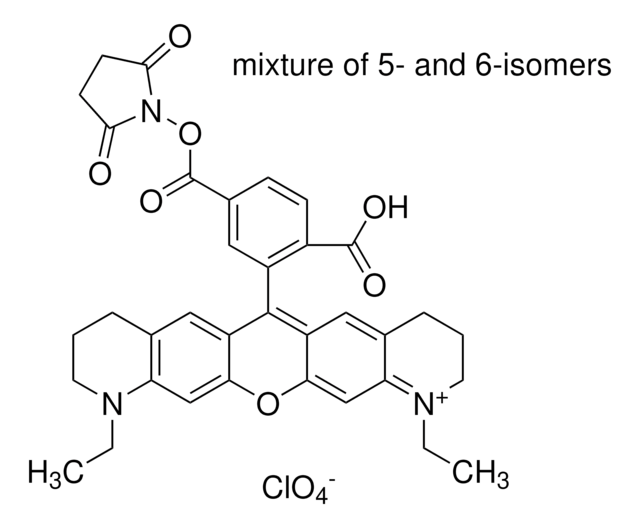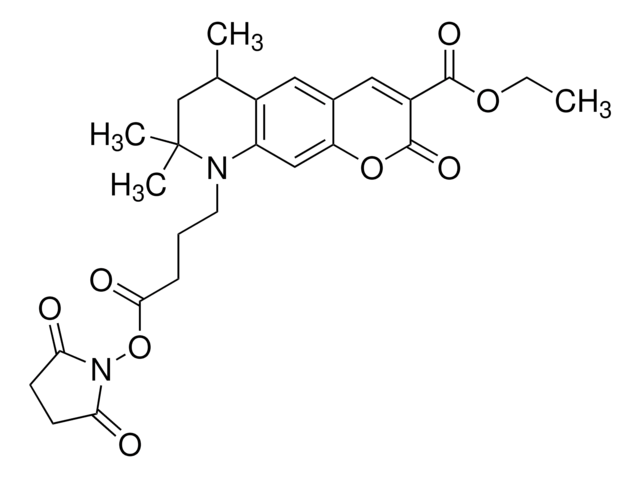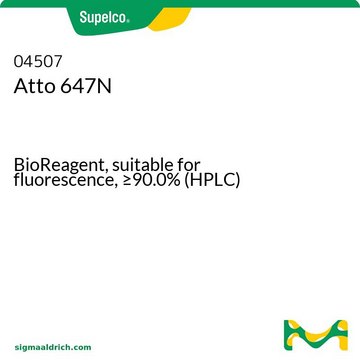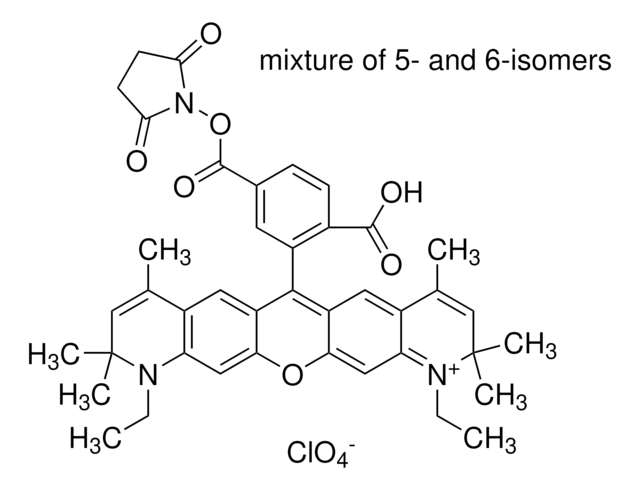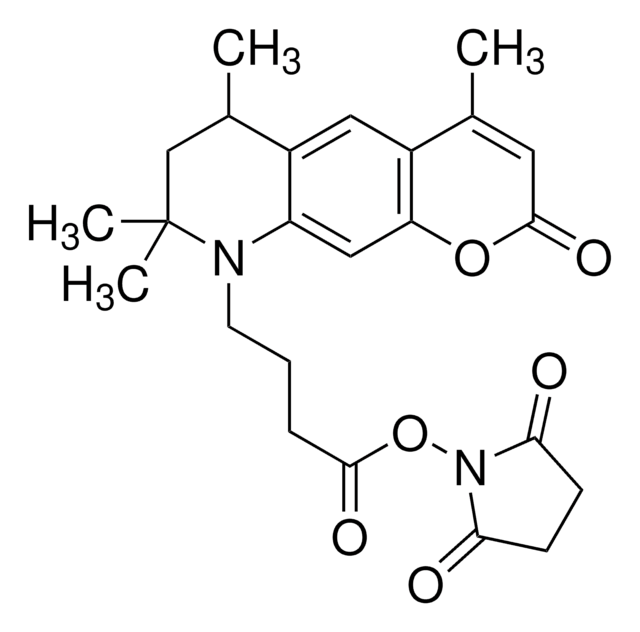41698
Atto 488 NHS ester
BioReagent, suitable for fluorescence, ≥90% (HPLC)
Sinonimo/i:
Atto 488
About This Item
Prodotti consigliati
Nome Commerciale
BioReagent
Saggio
≥90% (HPLC)
≥90% (degree of coupling)
Produttore/marchio commerciale
ATTO-TEC GmbH
λ
in methanol: water (1:1) (with 0.1% perchloric acid)
Assorbanza UV
λ: 501-507 nm Amax
Compatibilità
suitable for fluorescence
Temperatura di conservazione
−20°C
Descrizione generale
Applicazioni
Caratteristiche e vantaggi
- Strong Absorption.
- High Fluorescence quantum yield.
- High Photostability.
- Excellent water solubility.
Note legali
Prodotti correlati
Codice della classe di stoccaggio
11 - Combustible Solids
Classe di pericolosità dell'acqua (WGK)
WGK 3
Dispositivi di protezione individuale
Eyeshields, Gloves, type N95 (US)
Certificati d'analisi (COA)
Cerca il Certificati d'analisi (COA) digitando il numero di lotto/batch corrispondente. I numeri di lotto o di batch sono stampati sull'etichetta dei prodotti dopo la parola ‘Lotto’ o ‘Batch’.
Possiedi già questo prodotto?
I documenti relativi ai prodotti acquistati recentemente sono disponibili nell’Archivio dei documenti.
I clienti hanno visto anche
Articoli
Fluorescent Labeling of Peptides
Il team dei nostri ricercatori vanta grande esperienza in tutte le aree della ricerca quali Life Science, scienza dei materiali, sintesi chimica, cromatografia, discipline analitiche, ecc..
Contatta l'Assistenza Tecnica.
